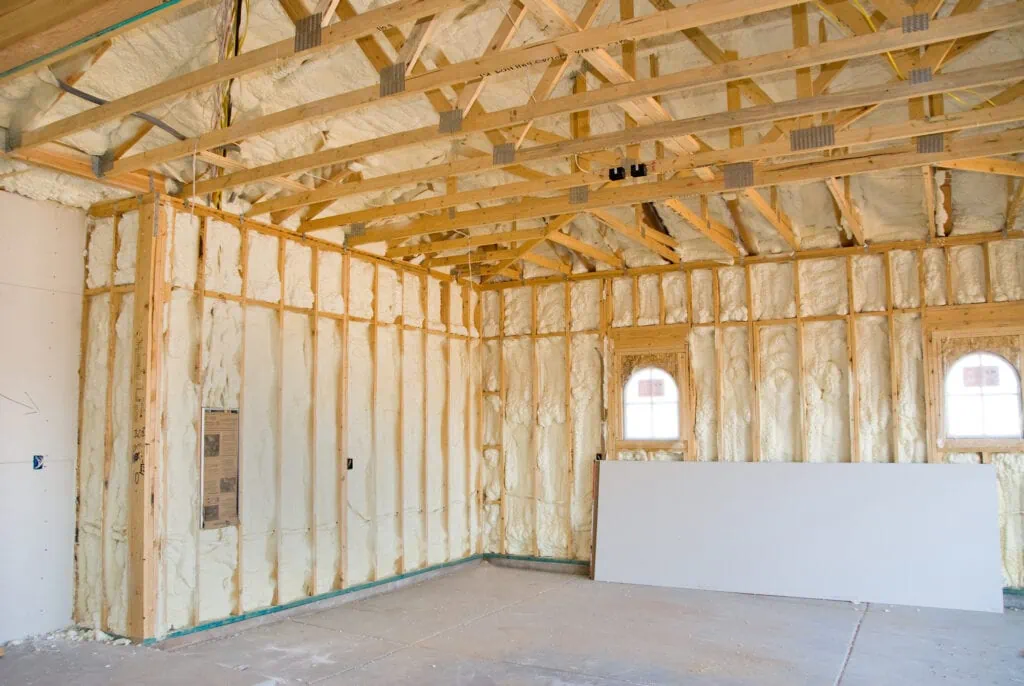Garages can transform into workshops, gyms, or recreational areas with appropriate modifications. This transformation, however, isn’t as simple as moving in your gym equipment or toolbox. To create a truly comfortable and versatile space, the first step is often insulating your garage. An insulated garage offers a stable environment, supporting various activities throughout the year.
A well-insulated space ensures stable temperatures, allowing for comfortable use in both winter and summer. Within the sphere of home improvements, certain upgrades can notably enhance the functionality, comfort, and value of the area. For instance, modernizing your garage doors can significantly contribute to aesthetics and utility, much like how insulating your garage can be a rewarding investment. Such improvements bolster energy efficiency, enhance comfort, and add to property value.
To facilitate such transformations, various resources are available. You may want to check out the Garage Door Co and other similar providers to ensure a good head start. Now, with an understanding of these upgrade options, let’s explore deeper the specifics of garage insulation.
Grasping The Concept Of Garage Insulation
Insulation controls temperature exchange, helping to maintain the garage’s temperature year-round. One critical aspect of insulation to consider is the R-value, which measures thermal resistance. Generally, the higher the R-value, the better the thermal resistance, but specific insulation needs may vary. Comprehending this principle is pivotal to our upcoming discussion on garage insulation specifics. Let’s examine the key advantages of insulating your garage:
- Energy Efficiency. Reduces the energy needed to maintain your garage’s temperature, leading to cost savings.
- Comfort Enhancement. Maintains a consistent temperature for a variety of activities, regardless of external weather conditions.
- Protection Of Belongings. Safeguards your car and other items stored in the garage from extreme temperature fluctuations.
- Property Value Increase. Potential home buyers often view a well-insulated garage as a valuable asset.
Understanding these benefits, let’s explore the various types of insulation materials available.
Different Types Of Insulation Materials
The market offers several types of insulation materials, each with its benefits and drawbacks. Your choice will depend on your specific needs and budget. These include:
- Fiberglass. Known for its affordability and ease of installation, though it requires a vapor barrier to prevent moisture buildup.
- Foam Board. Recognized for its high insulation value relative to its thickness, albeit at a higher price.
- Spray Foam. Provides excellent coverage, especially in hard-to-reach areas, but can be more expensive and challenging to install.
- Cellulose. A green option made from recycled paper but may be prone to mold if exposed to moisture.
Next, we will help you determine the best insulation type for your garage.
Determining The Best Insulation For Your Garage
Selecting the right insulation involves considering several key factors to meet your garage’s needs and budget. Consider these factors when choosing your insulation:
- Local Building Codes. Be aware of the local building codes and regulations related to insulation in your area. Legal compliance should always be the first consideration.
- Climate. The chosen insulation’s R-value should align with your area’s climate, offering optimal thermal resistance. Harsher climates demand higher R-values for better performance.
- Garage Use. How you utilize your garage also affects your choice. For instance, if you frequently use your garage as a workspace, high R-value may be preferable for optimal comfort.
- Type Of Garage. The design of your garage, such as whether it’s attached or detached, and the presence of a room above it can also influence your decision.
- Budget. Evaluate your budget, factoring in not just the upfront cost of the material and installation but also the potential long-term energy savings.
Choosing the right insulation is an important first step. In the following section, we’ll guide you through the subsequent process – the installation.
A Quick Guide To The Process Of Insulation Installation
The process of installing insulation can seem daunting but becomes manageable when broken into smaller steps. Even so, while a DIY approach may appeal to some, consulting a professional often assures the best outcome. Here are the key steps of the process:
- Collecting Necessary Tools And Materials. Gather the required material and tools such as utility knife, tape measure, and safety gear.
- Executing The Installation. Following the manufacturer’s instructions is vital for the correct and safe installation.
- Prioritizing Safety During Installation. It’s crucial to prioritize safety by using necessary protective equipment and working in well-ventilated spaces.
While these steps provide guidance, professional expertise often guarantees the best outcome. Next, we’ll discuss the financial aspect of garage insulation.
Cost Of Insulating Your Garage
Insulating your garage involves costs for material and possibly professional installation. However, it’s important to consider that these upfront costs are often offset by significant long-term energy savings. A well-insulated garage can lead to reduced energy bills. Plus, it may increase your home’s overall value. Remember, regular maintenance maximizes your insulation’s effectiveness and longevity. Thus, insulating your garage is not just an expense—it’s an investment.
Preserving and Monitoring Your Insulation’s Effectiveness
Maintaining the effectiveness of your garage insulation requires regular checks for signs of wear or damage. This entails:
- It’s crucial to routinely examine for any signs of wear or damage.
- Replacing the insulation as needed.
- Exercise caution to prevent damage, such as by avoiding the storage of sharp objects nearby.
Now that we’ve covered all the bases, it’s time to wrap up our discussion.
Conclusion
In conclusion, investing in the right insulation transforms your garage into a comfortable, energy-efficient, and usable space all year round. Having covered the essentials, you’re now better equipped to undertake this home improvement project. The appropriate choice of insulation material and its diligent maintenance are integral to harnessing these benefits. Best of luck on your garage insulation journey!




